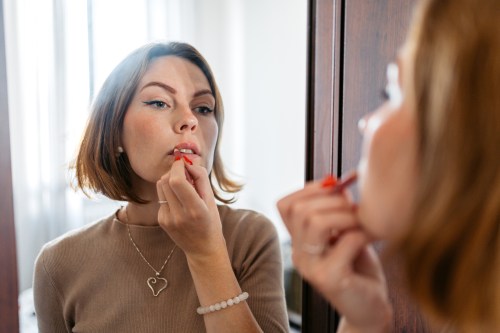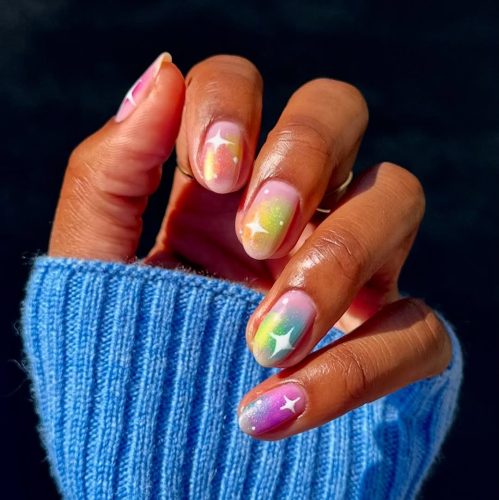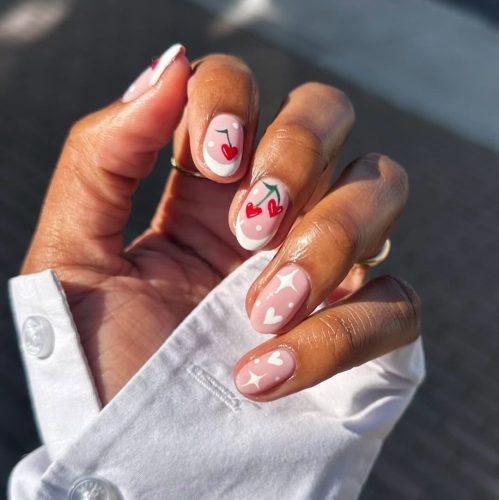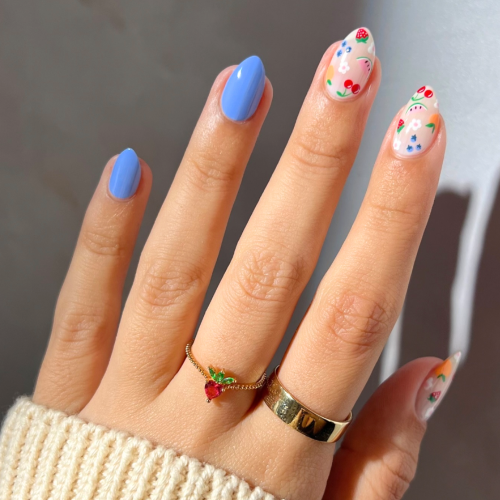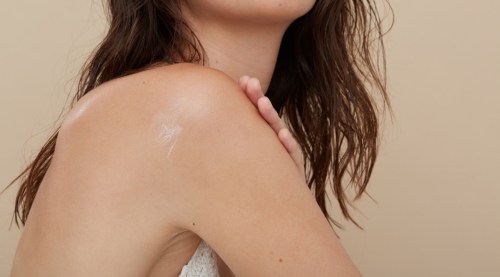These are the ingredients you need to deal with *every* single skin issue
From vitamin C to retinol, from niacinamide to peptides, these are the uses for the gold-standard ingredients on your beauty label nowadays.

With shiny packaging, bold graphics, and alluring promises of clearer, firmer, and brighter skin in just days, the skin-care aisle can prove overwhelming for even the most seasoned beauty junkie.
Experts say that bypassing the marketing speak and honing in on the ingredient list is a good way to narrow down the endless options that await. For those women without a cosmetic chemistry degree, however, that can seem like a daunting task—but not if you know what to look for.
First, you have to have a skin-care checklist: “If you aren’t sure what to use, I tell my patients to think of ‘buckets’ and make sure they have something to fill each bucket,” says Kavita Mariwalla, M.D., of Mariwalla Dermatology in Long Island, New York. “The buckets are to cleanse, which happens twice a day, protect and prevent for the morning, and reverse for at night.”
Keeping Dr. Mariwalla’s advice in mind, I asked her and Perry Romanowski, the independent cosmetic chemist behind The Beauty Brains (a site and podcast that answers all of your beauty and ingredient queries) to break down the science behind some of the most powerful and effective active ingredients on the market. With this expert-approved ingredient guide, the next time a breakout flares up or dull skin has you down, you’ll know exactly what to reach for.
Read on for a comprehensive guide of the active ingredients to solve all of your skin concerns.

To exfoliate: alpha hydroxy acids
Exfoliating is a great way to improve skin tone and texture, but according to experts, not all skin types can handle an abrasive physical exfoliator (think sugar- or salt-based scrubs). Enter alpha hydroxy acids, a class of chemical exfoliants that, according to Romanowski, is added to cleansers, toners, masks, and creams to loosen dead skin cells and smooth skin, no scrubbing required. Glycolic, lactic, and mandelic acids are common AHAs, and, while they shouldn’t be applied to chapped or open skin, Dr. Mariwalla says AHAs are “usually safe even for sensitive skin.”
To clear breakouts: beta hydroxy acids
Recognized by the Food and Drug Administration (AKA the FDA, which regulates some beauty ingredients), as an acne-treating ingredient, salicylic acid is part of a family of chemical exfoliants known as beta hydroxy acids and is found in everything from spot treatments to serums. Like AHAs, Romanowski says BHAs are “known for their ability to help slough off dead skin cells.” When it comes to treating breakouts, Dr. Mariwalla likes salicylic acid because it works as a comedolytic agent, which means it loosens black heads and clears pores, while being less irritating than benzoyl peroxide, another common pimple fighting ingredient.
To brighten: vitamin C
Not just found in your morning glass of orange juice, topical vitamin C is a “super potent antioxidant that combats the ill effects of UV damage and improves the efficacy of sunscreen when layered underneath it,” says Dr. Mariwalla. While Romanowski agrees that vitamin C both protects skin and prevents damage, it’s a temperamental ingredient that can be difficult to stabilize (here’s how to know if its time to ditch your vitamin C serum because it’s gone bad). Therefore, he recommends looking for products “with the vitamin C derivative ascorbic acid as well as formulas that don’t contain water and are packaged in a way to protect it from excess light and air” for maximum efficacy (like air tight pumps and dark glass bottles).

To smooth and firm: retinol
Forget unicorn makeup, retinol—a vitamin A derivative that boosts skin cell turnover, smooths skin, unclogs pores, lightens age spots, and refines skin texture—is a true magical ingredient for its ability to treat everything from acne to wrinkles. Decades of research back upthe claims and the fact that it’s recommended as the superior anti-aging ingredient. Dr. Mariwalla likes patients to start integrating gentler, over-the-counter retinols found in the regular beauty aisle (not to be confused with prescription Retin-A or tretinoins, which are heavier-duty) into their nightly routines as early as their twenties because she considers it “the best anti-anger overall.” Experts add that there’s an adjustment period when using retinol, so don’t be surprised if you have some skin flakiness, but if you’re concerned about how much consult your dermatologist.
To hydrate: hyaluronic acid
Touted for its ability to hold up to 1,000 times its weight in water, the naturally occurring sugar molecule, hyaluronic acid, is a humectant that can absorb and retain moisture within skin. According to Dr. Mariwalla, our skin’s natural HA production begins to decrease in our thirties, which makes it a powerful anti-aging skin-care ingredient—when it’s formulated correctly. “Some manufacturers use micronized hyaluronic acid, which doesn’t work because it’s formulated at a molecular weight that actually doesn’t pass through the skin barrier,” she says. So skip anything that’s been micronized and look for plain-old HA on the label to maximize its mega-moisturizing power.
To fight inflammation: niacinamide
You know that inflammation—be it from environmental aggressors like pollution, stress, or poor diet—is the root of most skin conditions; luckily, niacinamide can curb a lot of its not-so-pretty aftermath. Because of this vitamin B3 derivative’s anti-inflammatory and antioxidant properties, Dr. Mariwalla recommends applying topical niacinamide-based products to treat acne, rosacea, and hyper-pigmentation.

To improve barrier function: ceramides
According to experts, the key to healthy skin is a healthy skin barrier, and ceramides are key to fortifying it. This oily wax like ingredient is actually found naturally on your skin and when you have enough of it, your skin is able to keep the bad stuff out (pollution, debris) and the good stuff in (water, etc.). “They form a kind of water-proofing barrier in the upper layers of skin,” Romanowski says. “They’re not only critical for helping skin retain water but they also help repair the skin’s natural barrier and regulate cells.” Since ceramide production diminishes with age, Dr. Mariwalla recommends using a ceramide-based moisturizer because, she says, “the more you have present on the skin surface, the more they’re stimulated to form on their own.”
To boost collagen: peptides
“Think of peptides as the messengers between skin cells,” says Romanowski, of the small amino acid chains found in the epidermis and dermis layers of the skin. According to him, because of their communicative nature, naturally occurring peptides can help regulate hormonal activity, activate or deactivate immune responses, and stimulate wound healing. When applied topically in skin care, Romanowski says there is evidence “peptides can relax wrinkles, increase collagen production, and stop collagen degradation” and therefore keep your skin looking younger longer.
To protect: vitamin E
Often used in conjunction with other antioxidants—especially vitamin C—Romanowski says vitamin E is the workhorse added to many skin-care formulas because of its ability to help stabilize the typically unstable vitamin C formulas mentioned above. Vitamin E is naturally found on human skin, but it’s easily depleted because of UV exposure and other environmental factors, so adding an extra dose from a bottle will give it an extra protective boost.
To glow: curcuminoids
Good skin is as much about what you put in your body as what you put on it. And one walk through Sephora, you’ll quickly notice that the beauty supplement boom is apparent. With their anti-inflammatory and antioxidant properties, curcuminoids (the active ingredient in the powerhouse turmeric) can deliver that post-facial glow when regularly incorporated into your diet, explains Dr. Mariwalla. She touts the skin brightening benefits of turmeric, and recommends looking for capsules that pair curcuminoids with more easily digested lipids for better absorption. In the meantime, however, consider this your excuse to reach for that 3 p.m. turmeric latte.
You know what ingredients to scan for, now decode the label of every product in your skin-care regimen with this beginner’s guide (from concentration levels and ingredient sources and more).
Sign Up for Our Daily Newsletter
Get all the latest in wellness, trends, food, fitness, beauty, and more delivered right to your inbox.
Got it, you've been added to our email list.
